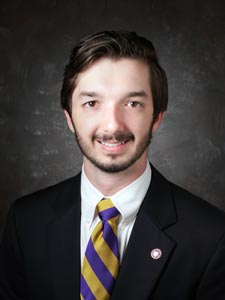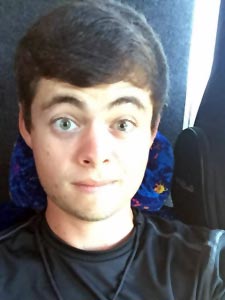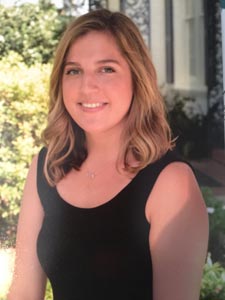Undergraduate Research Opportunities Program
About UROP | FAQs | Funded Projects | Application | Contact
Funded Projects: 2017
 Cameron Belding, biology major, Nicholls State University
Cameron Belding, biology major, Nicholls State University
Faculty Advisor: Raj Boopathy, Department of Biological Sciences
Presence of Antibiotic Resistant Bacteria and Antibiotic Resistance Genes in the Coastal Waters of Southeast Louisiana
This project’s primary goal is to monitor southeast Louisiana’s coastal waters for the presence of antibiotic resistant bacteria (ARB) and antibiotic resistance genes (ARG). More specific objectives are to monitor fecal coliform levels, quantify the abundance of bacteria, and observe how the presence of ARGs varies by location. Educating the public on the importance of coastal water quality is another objective of this study.

Brandon Champagne, coastal environmental science major, Louisiana State University
Faculty Advisor: Kehui (Kevin) Xu, Department of Oceanography and Coastal Sciences
Calibrations of Optical and Acoustic Sensors for Coastal Protection and Restoration Research
In order to establish a relationship between turbidity and suspended sediment concentration (SSC), this project will calibrate optical and acoustic sensors for comparison with SSC to find the best ways to determine calibration curves. The effects of grain size of sediment on the sensitivity of optical and acoustic sensors will also be compared. This technology can have a broad impact on sediment delivery, transport and deposition in various types of coastal protection and restoration projects.
Devin Comba, coastal environmental science major, Louisiana State University
Faculty Advisor: Morgan Kelly, Department of Biology
Epigenetic Effects of Salinity in the Eastern Oyster Crassostrea virginica
The objective of this project is to learn more about how eastern oysters respond to changes in salinity by altering their gene expression through methylation – the addition of a single carbon and three hydrogen atoms (called a methyl group) to another molecule. Methylation is a vital metabolic process that happens in every cell and every organ. Using oysters grown in the lab and collected from various populations, methylation patterns will be measured and compared according to salinity levels. This research has the potential to test for adaptive responses to salinity stress that could be passed on from one generation of oyster to the next, conferring increased salinity tolerance to stocks originating from more stressful habitats.
 Brendan Copley, civil engineering major, Louisiana State University
Brendan Copley, civil engineering major, Louisiana State University
Faculty Advisors: Navid H. Jafari & Q. Jim Chen, Department of Civil and Environmental Engineering
Integrating Marsh Soil Strength and Failure Progression in Marsh Edge Erosion Models for Coastal Louisiana
The first objective of this project is to determine the relationship of soil shear strength on erosional resistance. The second objective is to put into place a continuously monitored site with the purpose of developing a mechanistic erosion model. This information collected will aid in the creation of an improved marsh edge erosion model to more effectively predict the impacts of coastal protection and restoration plans.
Morganne Guidry, environmental science major, University of Louisiana at Lafayette
Faculty Advisor: Jenneke Visser, School of Geosciences
Effects of Flooding Height, Duration and Timing on Spartina patens
This study will test the effects of major sediment diversions on the common marsh grass spartina patens during the dormant season. The primary objective is to determine if the negative effects of flooding in marsh areas near diversion sites can be reduced by adjusting the timing of diversions.
 Alexandra R. Powajbo, chemical engineering major, Louisiana State University
Alexandra R. Powajbo, chemical engineering major, Louisiana State University
Faculty Advisor: Mark C. Benfield, Department of Oceanography and Coastal Sciences
Microplastic Abundances and Spatial Extent Across the LSU Campus Using Citizen Science
Through the development of a smart phone application and a crowd sourced citizen-science program, this project’s goal is to determine hotspots on the LSU campus for microplastic pollution. After determining what types of plastics are most common in such places, solutions to microplastic pollution will be developed for recommendation to the LSU Campus Sustainability Committee. Additional objectives are to increase environmental literacy and education in the LSU community and increase participation in citizen science programs.
 Kristen Rosamond, environmental studies/psychology major, Tulane University
Kristen Rosamond, environmental studies/psychology major, Tulane University
Faculty Advisor: Jordan Karubian, Department of Ecology and Evolutionary Biology
Social Information Use and Foraging Behaviors of the Brown Pelican (Pelecanus occidentalis) in the Northern Gulf of Mexico
The degree to which social information influences brown pelicans’ individual foraging behaviors, specifically in regards to Gulf menhaden, is not well known. Objectives of this project are to determine differences in individual use of social information to locate prey and the effects it has on foraging and breeding success. Microvideo camera technology and GPS telemetry will be used to assess foraging strategies and social interactions during a critical breeding period.
